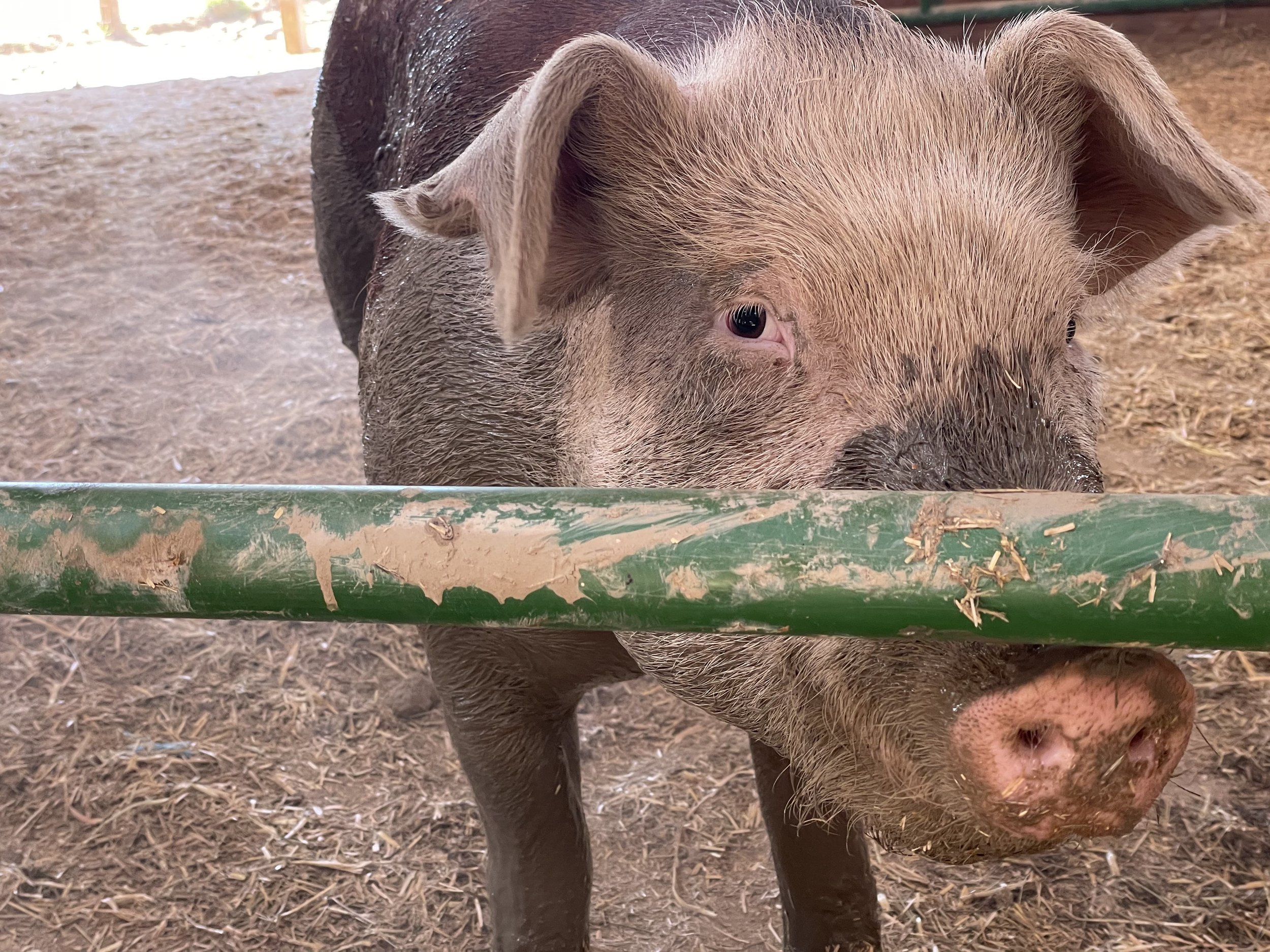An-Animal-a-Month: Pigs
Meet Francine, a year-old Hereford pig. She’s recently wallowed in a mud pit to cool down on a 95 degree day.
Pigs – not just for dinner. Over the last six months, I’ve had the great pleasure and privilege of getting to know Francine through clicker play. Clicker play is a type of positive-reinforcement training. We work on fun tricks, like sit and color identification, as well as life skills, like lifting hooves for trimming. Through playing with her and reading about pigs, I’ve come to appreciate that pigs are super smart, highly social, and the emotional drama queens of the barn. She honestly learns tricks faster than our standard poodle! For this blog, I was on the lookout for children’s nonfiction books about pigs that focused on pigs as pigs, rather than as food. Except for books about mini pigs as pets and baby pigs, most books I found included information about consuming pigs. This isn’t surprising considering that pork is the most widely eaten meat in the world. Though I’m vegetarian, mostly vegan, and it’s hard for me to read about pigs raised for meat, I think it’s a good idea for children to know where their food comes from. If your students and children are ready for this information, check out Pigology. I’ve also included a book about mini pigs for those who aren’t ready to know where their food comes from. There seems to be room for more narrative and expository literature nonfiction about pigs. (By the way, Francine, and her brother made their way to a farm sanctuary and won’t ever be slaughtered.)
From powerful snout to curly tail, this book covers it all! It’s the second book in Princeton Architectural Press’ farm animal series (Chickenology was the first). Each spread, with colorful, information-packed illustrations, covers a different aspect of swine, including their evolution, the 16 species, diet, life cycle, senses, body parts, cognition, how they are used for food around the world, mythology, breeds, and more. A modern-day encyclopedia that goes beyond facts available on the internet. Ages 6-10.
Kind of nonfiction: Browsable. Browsable books can be read in bits and pieces, as each page stands on its own. A good place to gain an overview of pigs, find fun facts to share, and to do research. (My categorization using Melissa Stewart’s 5 Kinds of Nonfiction.)
Ties to Next Generation Science Standards:
1-LS1-2 (Read texts and use media to determine patterns of behavior of parents and offspring that help offspring survive.) Pages 18-19 discuss how mother pigs build nests and nurse their young. The piglets’ nursing technique is compared to that of kittens. Can your students find books or make observations of other mammals nursing their young to establish a pattern?
4-LS1-1 (Construct an argument that plants and animals have internal and external structures that function to support survival, growth, and reproduction.) Turn to pages 24-30 to find out how a pig’s anatomy helps it survive. For example, pigs have monocular vision that allows them to keep a sharp lookout for predators. Their snouts have an extra bone and thick cartilage that allow them to plow through the soil, sniffing out food. Find many more examples on these pages.
Do you and your children want to be pig parents? This chapter book will help you make an informed decision. It begins by describing the traits and behaviors of mini pigs – cleanly, smart, trainable, social, but not so mini. Then, the following chapters delve into how to care for a mini, including space considerations, feeding, vet care, and training. With adorable photographs and fun facts scattered throughout the text, the book is a primer on life with a mini pig. Ages 6-8.
Kind of nonfiction: A blend of Active and Traditional nonfiction. The simple expository text is mixed with “how to” advice on selecting and raising a mini pig. (My categorization using Melissa Stewart’s 5 Kinds of Nonfiction.)


